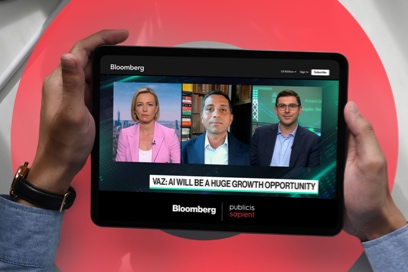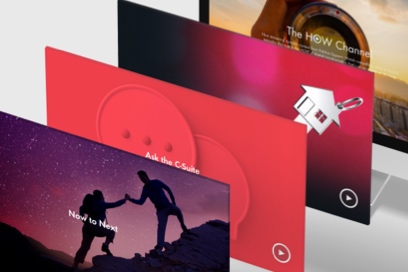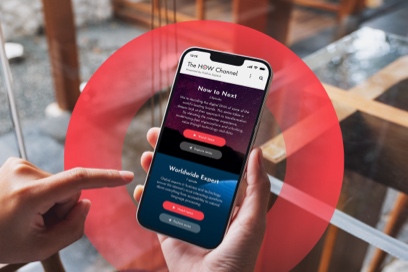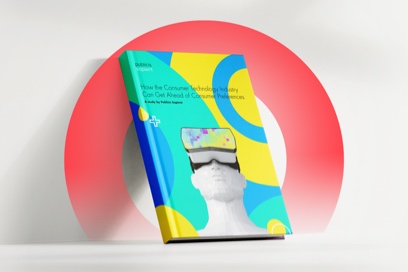Raj has been with Sapient for 25+ years, with 8 years in government and 17+ in the commercial space. He currently serves as the North America Industry Lead for Telecom, Media and Entertainment, and Technology. Raj is located in Arlington, Virginia.


featuring
Raj Shah
North America Industry Lead for Telecom, Media and Entertainment, and Technology

How would you compare the current telecommunications landscape in Europe versus the United States?
If you look at Europe, there are significantly more providers in the space and therefore there is a higher focus on service and product innovation than in the US. This higher focus on product and service is driven by the low transition barriers and higher level of competition between providers — you are seeing connectivity move towards a true commodity. In Europe, we have seen a number of the traditional telco companies move into other spaces such broadband and sports streaming (BT) or move from broadcasting/streaming to telco (Sky). There has also been a drive to develop new brands, propositions and offerings to different segments for example Sky & Now TV/ Broadband, BT & EE combining fixed and mobile brands for 'unbreakable wifi’, while a lot of low cost MVNO players are targeting the value segment. The challenge for these is providing value and not having a race to the bottom, where the differentiation becomes on the device and not the provider.
Meanwhile, in the US, the landscape is primarily dominated by the main three providers, AT&T, Verizon and T-Mobile. One thing that is not always as obvious to the standard consumer, however, is what is happening beneath the calm of the surface. There are many others in the space trying to break into the top tier - while the Big 3 have been able to maintain their positions, challengers to the incumbents in the form of foreign competition as well as cable providers moving into wireless pose new threats. In the US, there is also the consideration that major tech companies could pivot and look to becoming a provider themselves over partnering with providers to support their products. For example, Apple, who has set the bar high for devices, could in theory turn around and become their own provider disrupting the space and making a path for others to follow.

How do you see Salesforce playing a role in the telecommunications space?
All client relationship management (CRM) platform players have been very focused on promoting the capabilities unique to their platform, however the success within the telecommunications space for any partner will be in identifying use cases. If you are talking to a major player there may not be apparent value derived from a very product functionality-centric conversation, however, if you start discussing how their first party data can be used to drive new innovations to manage loyalty, and how the capabilities within Salesforce can help predict churn and can improve customer experience, then the unlock begins to happen.
For example, these systems can provide key data such as usage, revenue, and engagement at the account level, which enables clients to glean insights on their most profitable (or least profitable) customer and how to better serve them with new or tangential products. These are the use cases that executives need and want to hear about and the solutions that have been implemented working towards the overall goal.

What is one of the stronger use cases that is being presented in Europe?
Regardless of region, a major use case can be built around loyalty. If you look at Europe in particular, loyalty can be an interesting component to a business. While most initially think of attraction and retention as it pertains to loyalty, there is the alternate side of how to move customers who may be a drag on the business’ profitability to more profitable products, such as pre-paid products.
When looking at maintaining customers’ loyalty, companies can no longer provide just a functional experience. Customers’ expectations have been set on what experiences should be across all of their digital touchpoints - from Amazon to the post office.
Companies have to create experiences that create surprise and delight - what the organization is providing to the end user will ultimately determine how the customer feels and drives loyalty.
With the competitive landscape in Europe there is even more opportunity to create those magical moments that are both impactful and meaningful to the customer.

What is the best way for Salesforce to engage with Publicis Sapient?
When working with Salesforce, the one thing that is top of mind is how we approach the consultative piece upfront. While we are in the initial conversations with the client, we want to be able to work alongside Salesforce to solve the business problem, and let the product take a backseat temporarily. The big question that we should be aligning on is “what is keeping our clients up at night” and what does a solution look like in order to alleviate those pain-points. Once we have the solution identified, then we can start to think about which products are going to support this initiative. It is a longer process, but if we align early and often along the way, we can lead a successful cycle and ultimately a joint win.

What about the “Salesforce Ohana” and culture sticks out in your mind?
Every time I’ve worked with Salesforce, there is an alignment in values around doing good for the customer and doing right by them. I have been able to see the openness to new ideas and despite the usual pressure to do things one way or another, there is never this feeling when working across the table from our Salesforce counterparts. We are working towards a common goal of creating something great for our clients and not push a sale because of the end of a quarter or to make a number, and that mentality is incredibly valuable when working with a partner.








